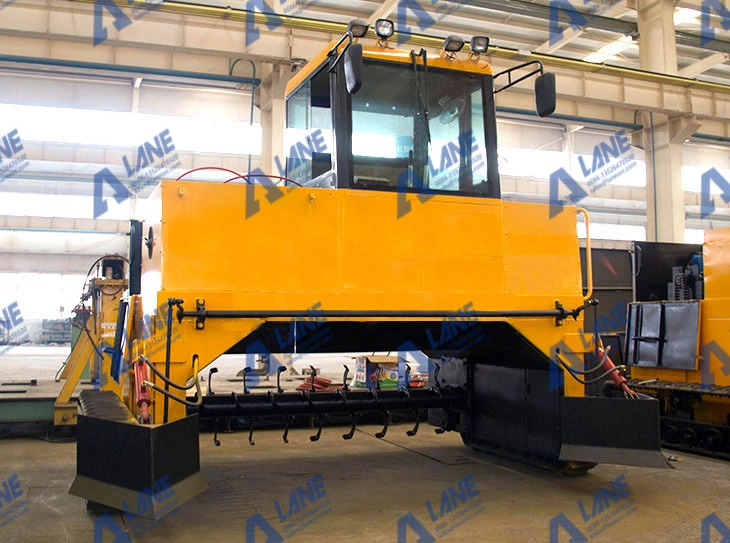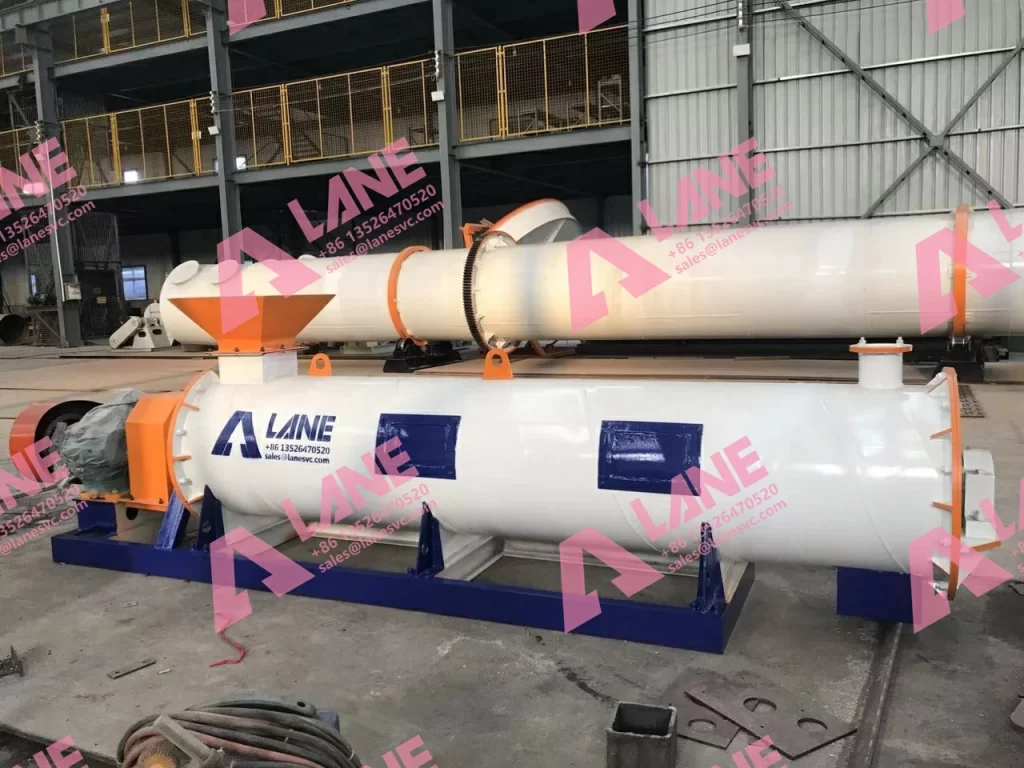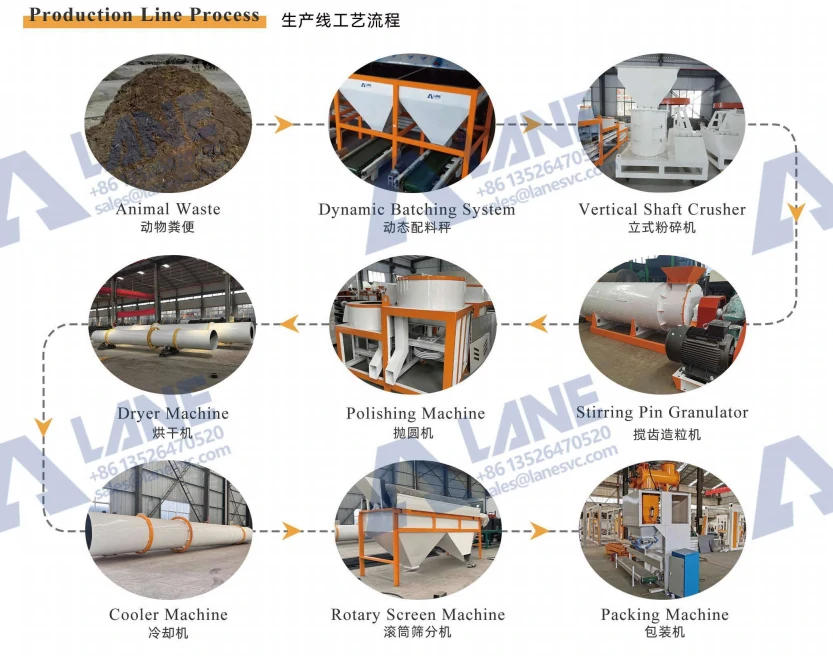With the growing awareness of sustainable farming and environmental protection, organic fertilizer has become one of the most important products in modern agriculture. Unlike chemical fertilizers that may degrade soil quality, organic fertilizer improves soil structure, enhances microbial activity, and provides long-term fertility.
This article will walk you through how to make organic fertilizer step by step — from raw material collection to the final packaging — using professional equipment such as compost turners, crushers, granulators, dryers, and more, as shown in the organic fertilizer production line image above.
Collecting Raw Materials
The first step in making organic fertilizer is gathering suitable raw materials. Common materials include:
Animal Manure: Chicken, cow, pig, or sheep manure provides essential nutrients like nitrogen and phosphorus.
Crop Residues: Straw, corn stalks, and rice husks add carbon and organic matter.
Food Waste & Vegetable Residues: Fruit peels, vegetable scraps, and other organic waste are valuable inputs.
Agricultural Waste: Green waste, garden trimmings, or other biodegradable residues can also be used.
Before composting, these materials should be crushed or mixed to ensure a balanced carbon-to-nitrogen ratio (C:N ratio) — ideally around 25:1 to 30:1 — for efficient fermentation.
Composting and Fermentation
Raw materials must undergo biological fermentation to decompose and kill harmful pathogens or weed seeds. This process converts organic waste into stable, nutrient-rich compost.
Using a Compost Turner Machine
To accelerate and improve composting efficiency, the compost turner machine plays a vital role.
There are several types of compost turners available:
Crawler Type Compost Turner – Suitable for large outdoor composting sites, offering strong turning capacity and even oxygen supply.
Wheeled Compost Turner – Flexible and cost-effective, ideal for medium-scale compost piles.
Groove Type Compost Turner – Works within fermentation tanks for continuous and automated composting.
The compost turner mixes and aerates the material regularly, ensuring proper oxygen supply and uniform temperature throughout the pile. Composting typically takes 15–20 days, depending on the raw materials and environmental conditions.

Crushing Process
Once fermentation is complete, the composted materials are often lumpy. They need to be crushed into fine particles for further processing.
Equipment Used:
Vertical Shaft Crusher – As shown in the production line, this crusher pulverizes semi-fermented compost into uniform fine powder, preparing it for granulation.
Dynamic Batching and Mixing
To achieve a nutrient-balanced organic fertilizer formula, different materials are mixed in precise proportions.
Equipment Used:
Dynamic Batching System – Automatically measures and distributes each component according to the required formula.
Mixer Machine – Ensures uniform blending of organic materials and additives such as humic acid, amino acids, or beneficial microorganisms.
This step guarantees consistent fertilizer quality and nutrient content.
Granulation Process
Granulation transforms powdered organic fertilizer into small, uniform granules, which are easier to store, transport, and apply.
Equipment Used:
Stirring Pin Granulator – Also called an agitator granulator, it mixes and shapes materials into spherical granules through mechanical stirring and rolling.
Polishing Machine – Further refines the granules, making them smooth, round, and attractive for commercial sale.
Granulation enhances the appearance and uniformity of the final fertilizer, improving its value and market competitiveness.

Drying and Cooling
After granulation, the organic fertilizer granules still contain moisture and need to be dried and cooled to ensure stability during storage.
Equipment Used:
Dryer Machine – Reduces the moisture content to around 10–15% by gently heating the granules.
Cooler Machine – Cools down the dried granules to prevent clumping and to maintain their quality.
This step ensures the product has a longer shelf life and remains in perfect condition during packaging and transport.
Screening Process
After drying and cooling, granules of different sizes are separated.
Equipment Used:
Rotary Screen Machine – Classifies the fertilizer granules by size, returning the oversized particles for re-crushing and re-granulation while keeping uniform granules as finished products.
Packaging and Storage
Finally, the organic fertilizer is packed for sale or use.
Equipment Used:
Automatic Packing Machine – Weighs, fills, and seals the fertilizer into bags efficiently, ensuring consistency and accuracy.
Packaged fertilizers are stored in a dry, ventilated place, ready for distribution to farms and markets.
Complete Production Line Flow
The full organic fertilizer production line process includes:
Animal Waste → Dynamic Batching System → Vertical Shaft Crusher → Stirring Pin Granulator → Polishing Machine → Dryer Machine → Cooler Machine → Rotary Screen Machine → Packing Machine
Each machine works in sequence to ensure continuous, automated, and efficient production. This setup can handle various raw materials and is customizable for different production capacities — from 1 ton/hour to 20 tons/hour or more.

Benefits of Setting Up an Organic Fertilizer Production Line
✅ High Efficiency: Continuous automated operation reduces labor costs.
✅ Eco-Friendly: Converts waste into valuable fertilizer, reducing pollution.
✅ Sustainable Agriculture: Improves soil structure and fertility naturally.
✅ High Profit Margin: Strong market demand and low raw material costs.
✅ Flexible Design: Can be customized for powder or granular organic fertilizer.
Conclusion
Making organic fertilizer is not only a practical way to recycle waste but also a sustainable business opportunity. With the help of professional equipment like compost turners, crushers, granulators, dryers, and packaging machines, you can easily set up a complete organic fertilizer production line.
Whether you’re a small farmer or an agribusiness investor, producing organic fertilizer contributes to healthier soils, better crops, and a greener planet.
For more details, please feel free to contact us.
Henan Lane Heavy Industry Machinery Technology Co., Ltd.
Email: sales@lanesvc.com
Contact number: +86 13526470520
Whatsapp: +86 13526470520